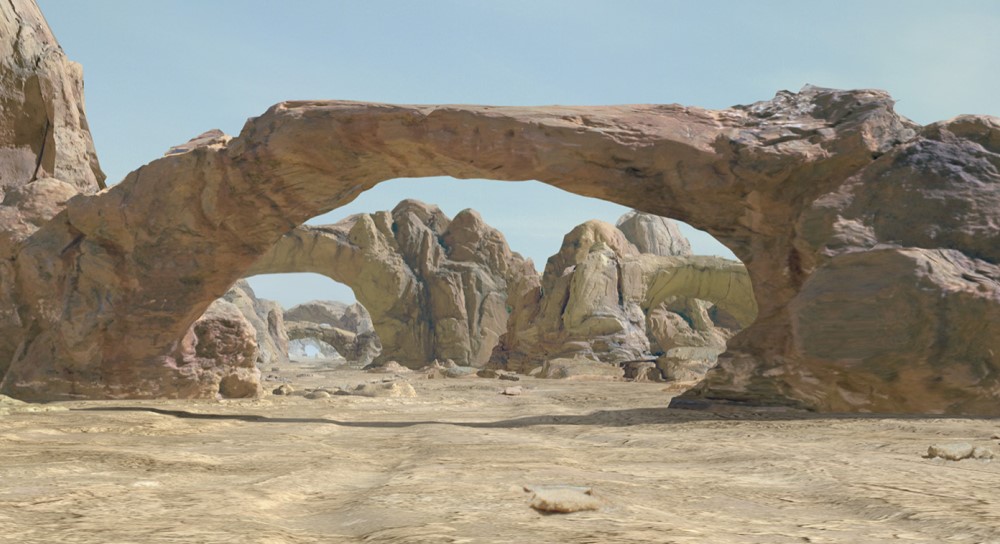Needing a unique terrain unlike anything that could be found here on planet earth that a vehicle could blast through at 600 miles per hour, ILM needed to fashion a way to create this incredible location. That would appear onscreen as the podrace track from The Phantom Menace, and Lucasfilm look back a quarter of a century to how the ILM wizards off the time figured out this high velocity conundrum via a technique with over half a decade of history – texture mapping.
ILM artist Paul Huston had joined ILM on its first project, Star Wars: A New Hope (1977). Over two decades into his tenure, he was still making contributions to the galaxy far, far away. Before The Phantom Menace, the Star Wars Special Edition theatrical releases in 1997 had been an important test ground for digital effects methods. For one new shot in A New Hope, Huston experimented with creating a view of Obi-Wan Kenobi’s home on Tatooine by digitizing a practical miniature and then projecting real-world photographs onto its surface. As the camera pushed in on the building, this texture-mapping method would help create a more believable sense of dimension. That, at least, was the intent. George Lucas, however, decided the technique didn’t fit the aesthetic of the original Star Wars film.
Huston would revisit the concept for the podrace. One memorable section of the desert course featured dozens of rock arches through which the pods flew. “[Visual effects supervisor] John Knoll became interested in my approach,” Huston told Cinefex. “I did some additional tests featuring a variety of different views – one started with a flying-forward motion, with the camera looking backward and then panning forward to look at the terrain that was approaching.”
John Knoll would recall how “Paul did some tests early on where he built some rocks out of foam and plaster, took them out in the parking lot to photograph, and then used a 3D stylus tool to record its surface points and replicate a 3D model in the computer. We’d then match the photography onto the rocks and build up a terrain. The first test I saw as running footage was shocking. It was clearly the way to do it.”
f
- Hardcover Book
- Barnes, Steven (Author)
- English (Publication Language)
- 416 Pages - 10/15/2024 (Publication Date) - Random House Worlds (Publisher)



